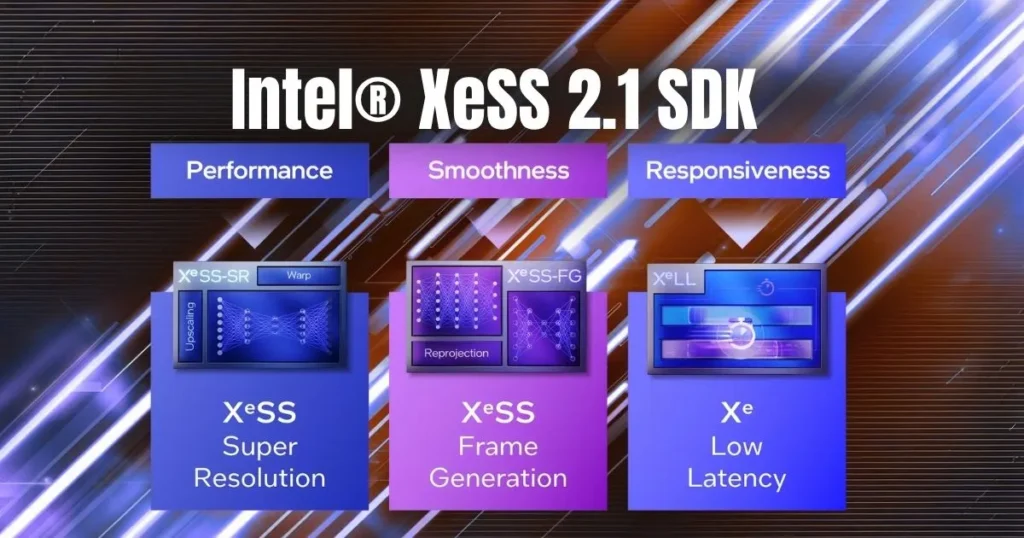In a major move for PC gaming, Intel has expanded its XeSS 2 technology to support AMD and NVIDIA graphics cards. Previously exclusive to Intel Arc GPUs, this update transforms XeSS into a true cross-vendor solution—putting it head-to-head with AMD’s FSR and NVIDIA’s DLSS.

The newly released SDK 2.1.0 adds full compatibility for rival hardware, including frame generation and low-latency features. Gamers with modern AMD or NVIDIA GPUs can now tap into Intel’s AI-driven upscaling, provided their hardware supports Shader Model 6.4.
What’s New in XeSS 2?
XeSS isn’t just about super resolution anymore. With the upcoming Arc Battlemage GPUs, Intel has supercharged the tech to include:
- XeSS-SR: AI-powered upscaling for sharper visuals.
- XeSS-FG: Frame Generation to boost FPS.
- XeLL: Low-latency tech for responsive gameplay.
Critically, XeLL only works alongside frame generation on non-Intel GPUs. If you enable frame gen, latency reduction kicks in automatically—but you can’t use XeLL alone.
Which GPUs Are Supported?
Here’s the breakdown:
- Intel Arc (Alchemist/Battlemage) & Core Ultra (Meteor Lake): Full support (SR + FG + XeLL).
- AMD Radeon RX 5000+ / NVIDIA GeForce GTX 10+: Compatible via Shader Model 6.4.
- Recommended for best results: RX 6000+ or RTX 3000+.
Older Intel integrated graphics (Tiger Lake, Alder Lake) only support super resolution.
Intel® XeSS 2 is now supported on other vendors GPUs! Developers can offer AI-based frame generation with low-latency technology to many more gamers by using the updated XeSS 2.1 SDK available today.
— Intel Software (@IntelSoftware) August 1, 2025
Link: https://t.co/nwQJI2PVt0 pic.twitter.com/111bXJY5YE
Why This Matters
Intel’s open approach pressures NVIDIA to democratize its tech. While DLSS remains exclusive to RTX cards, XeSS 2 and AMD’s FSR work across brands—giving gamers more choice and flexibility.
The catch? Game developers must update their titles to SDK 2.1.0. Once they do, millions of gamers could see smoother, faster performance without vendor lock-in.
Also, Read
- Intel Battlemage G31 Progress – 4 New GPU IDs Hint at High-End Arc Cards
- Intel Arrow Lake Refresh – Only Minor Clock Boosts, No NPU Upgrade
- Intel Nova Lake-AX Leaked – High-Power APU to Challenge AMD Strix Halo
The Bottom Line
Intel’s play could reshape the upscaling wars. With XeSS 2 running on AMD and NVIDIA hardware, PC gaming’s “AI arms race” just got more interesting—and more accessible.